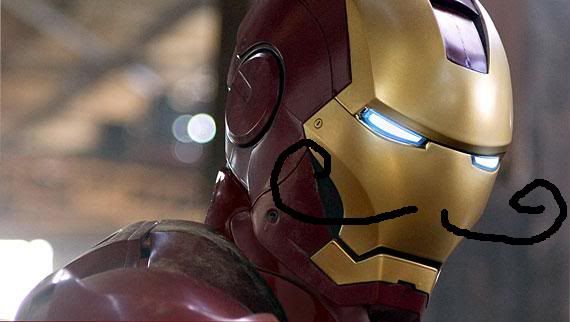Iron Man2 was written by Justin Theroux and directed by John Favreau. The film continues the story from its predecessor, Iron Man, and includes too many diluted plot obstacles for our protagonist, Tony Stark, Iron Man (let’s just count ‘em, just for fun…): 1) Mr. Stark is dying from an adverse chemical reaction to the element that powers his shiny suit and keeps him alive. 2) Stark’s known tendency for excess is amplified by his knowledge of his impending death and is causing publicity problems. 3) The U.S. government wants to legally obtain his suits to use their technology for the armed forces. 4) Stark’s friend, Lt. James Rhodes, desires to obtain these suits for the government. 5) A Russian scientist’s son, Ivan Vanko, seeks a vague revenge upon Tony Stark, or more specifically, the legacy of his father. 6) Stark’s commercial competitor, Justin Hammer, breaks Vanko out of prison because he, too, wants a piece of these magic suits to sell to the government.

Wow. That’s a lot of plot for a running time of just over two hours.
Maybe I’m just not a comic book person… I enjoyed the Nolan Batman films. And Sin City…. no, this one’s just bad.
It’s gotta be tough coming up a with a sequel to a comic book film adaptation, though. With the first film, you have the origin story, which usually contains the hero overcoming some obstacle (usually himself/herself), fighting off a villain or villains, and then riding off into the sunset. But a sequel needs to have the protagonist going through more obstacles, whether these are internal or external. It looks like Favreau and Theroux went hog wild with these obstacles. We’ve got two internal problems for Stark, and four external problems. Instead of focusing on two or three problems for the main character to overcome, the plot gets diluted by introducing a host of issues for Stark. This limits the amount of time the film spends on each narrative hurdle, and makes each one seem less important to the overall story. This results in a film where the plot seems simultaneously rushed and watered down. Maybe it was intended to make the viewer feel the strains of main character Stark. But I wasn’t stressed out for him. I was bored. Granted, I did not have unrealistic expectations about being “moved” by this film. I just wanted a ‘lil mild entertainment. Failure.
